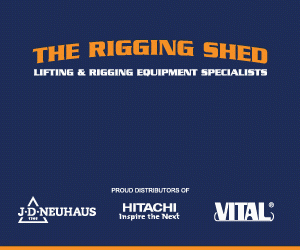)
STS crane modifications equip ports for rapidly changing needs
A world leader in the design, manufacture and maintenance of all types of port cranes, Konecranes, has introduced reach and height modernisations of ship-to-shore (STS) equipment to help operators to adapt quickly and cost efficiently to rapidly changing demands and ship sizes.
The STS Boom Extension and Crane Height Raising modernisations are engineered to help port operators to respond to changes in world container shipping fleets that now carry about 60% of world seaborne trade, rising from 102 million tonnes 1980 to more than 1.8 billion tonnes currently.
“Our aim with these STS crane modifications is to deliver evolutionary, incremental and essential change into existing crane fleets of all brands to enable them to adapt and thrive in a radically changed environment,” says Alfredo Bouza, sales and marketing director of Port Service at Konecranes, which builds some of the world’s largest and most complex cranes for the port, harbour, shipyard, container terminal and bulk handling industries.
Konecranes manufactures an extensive range of port-based products used globally, including massive Goliath shipyard cranes, ship-to-shore and bulk handling cranes for vessel loading and unloading, and all types of container handling cranes – ranging from rubber-tyred gantry cranes (RTGs) to lift trucks designed to handle full or empty containers and lift up to 80t.
“Konecranes’ decades of experience in the ports industry – as well as its worldwide network of 600 locations in 50 countries – has made it the premier provider of brownfield terminal developments and supplier of retrofit and modernisation services,” says Bouza.
Konecranes says the benefits of its STS boom extension and height upgrades include:
- Updating to the latest shipping size and speed requirements of cranes with outdated operational specifications. Cranes designed and manufactured years ago no longer meet the speed and dimension requirements of today’s shipping industry.
- Servicing larger vessels at reduced cost and environmental impact through greater capacity and efficiency
- Broader appeal to shipping customers
- Reduced risk of collision with vessel elements (radar, antennae etc.), and reduced insurance cost
- Option to upgrade to world-class technologies responding to modern environmental, health and safety regulations
- Rigorous inspections prior to extension, a process which can identify weak points and cracks.
- Reinforcement of these points will prolong the life of the crane by between 1-2 million movements.
Crane height extensions help operators attract and safely service increasingly large vessels
Konecranes Modernisation and Retrofit services recognise the fact that, after 15-20 years of operation, the steel structure and mechanical components of most port lifting machines may still function well. However, these cranes often become obsolete for several reasons:
- Lack of spare parts and technical support for discontinued components. The next generation of electronics and computerised parts becomes available every 5-7 years.
- More stringent safety requirements. Regulations for the safety of personnel, cargo and lifting equipment are tighter when compared with the rules of 15-20 years ago.
- Improvements in ergonomic and operational design. Technological developments have given modern lifting machines a range of features that make the work of operators easier.









